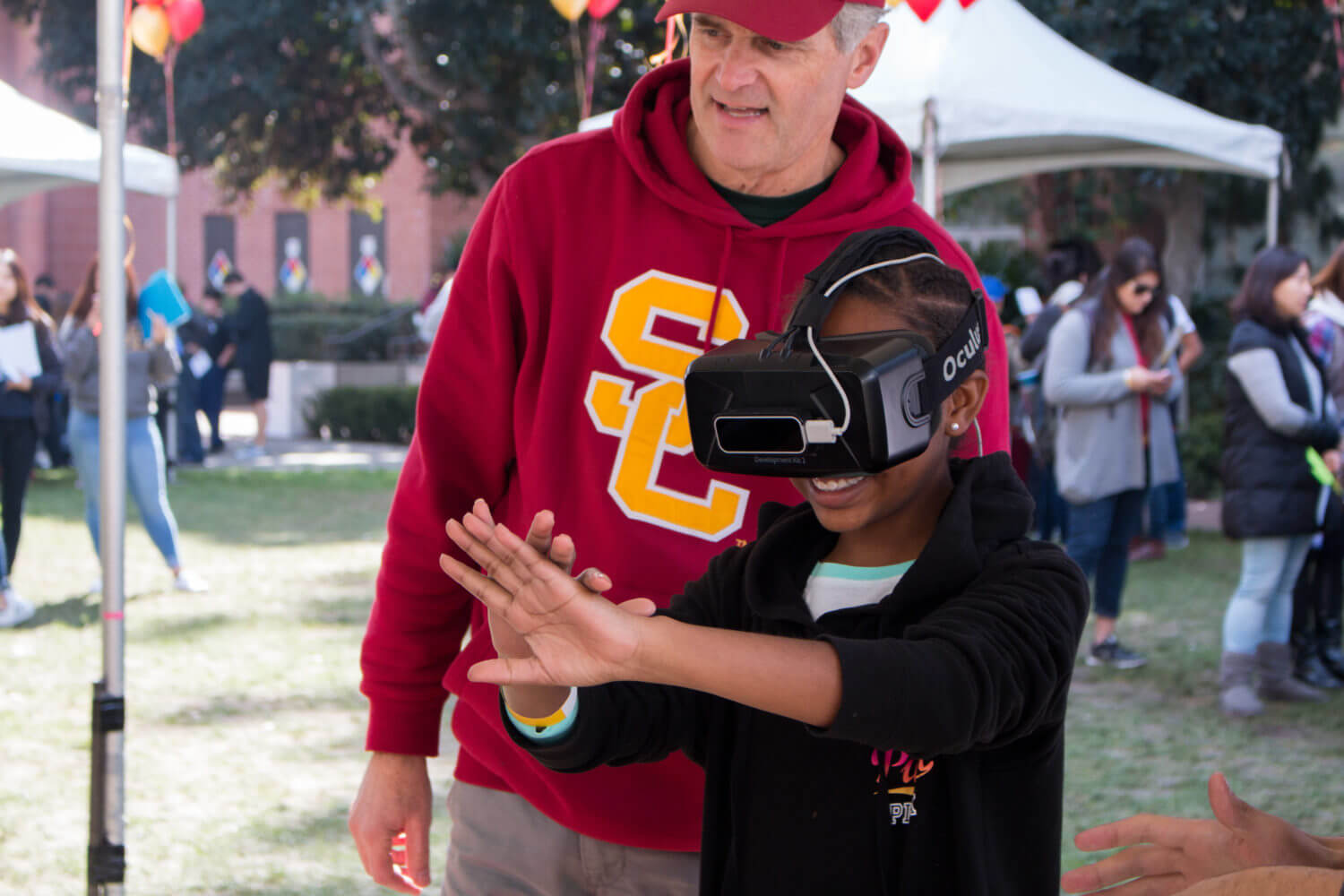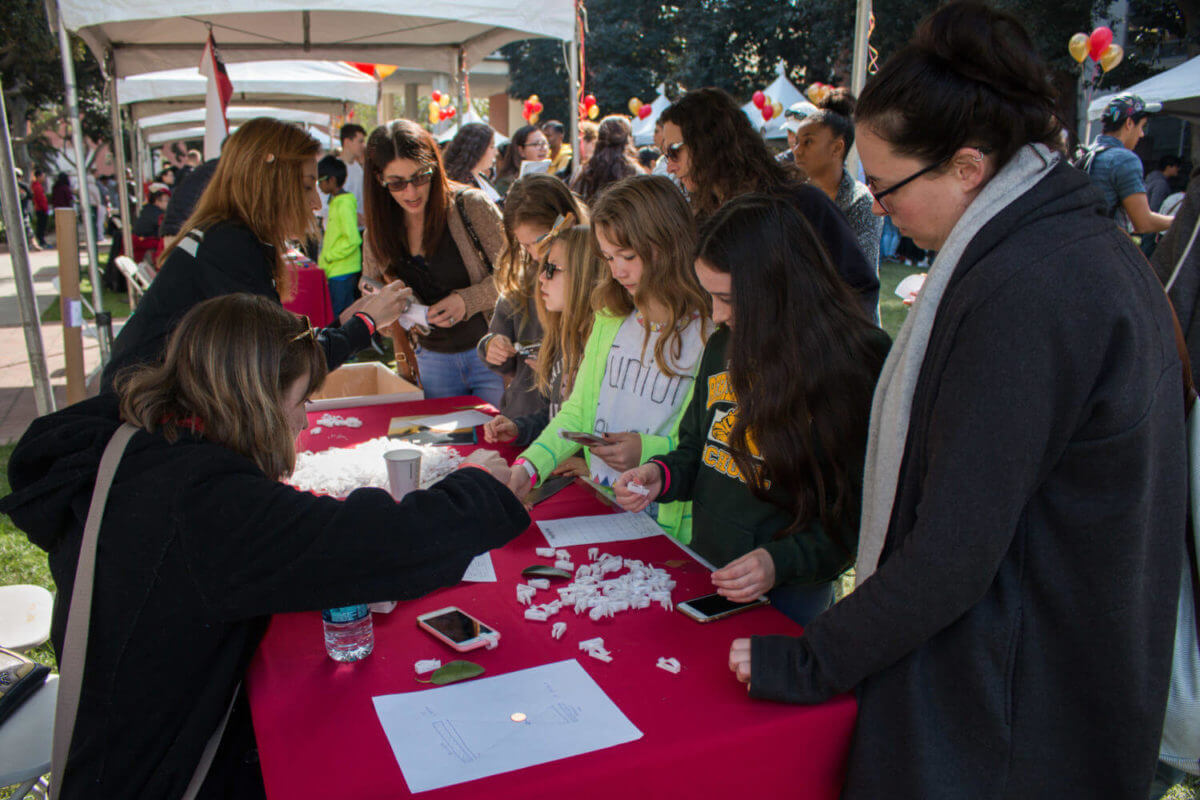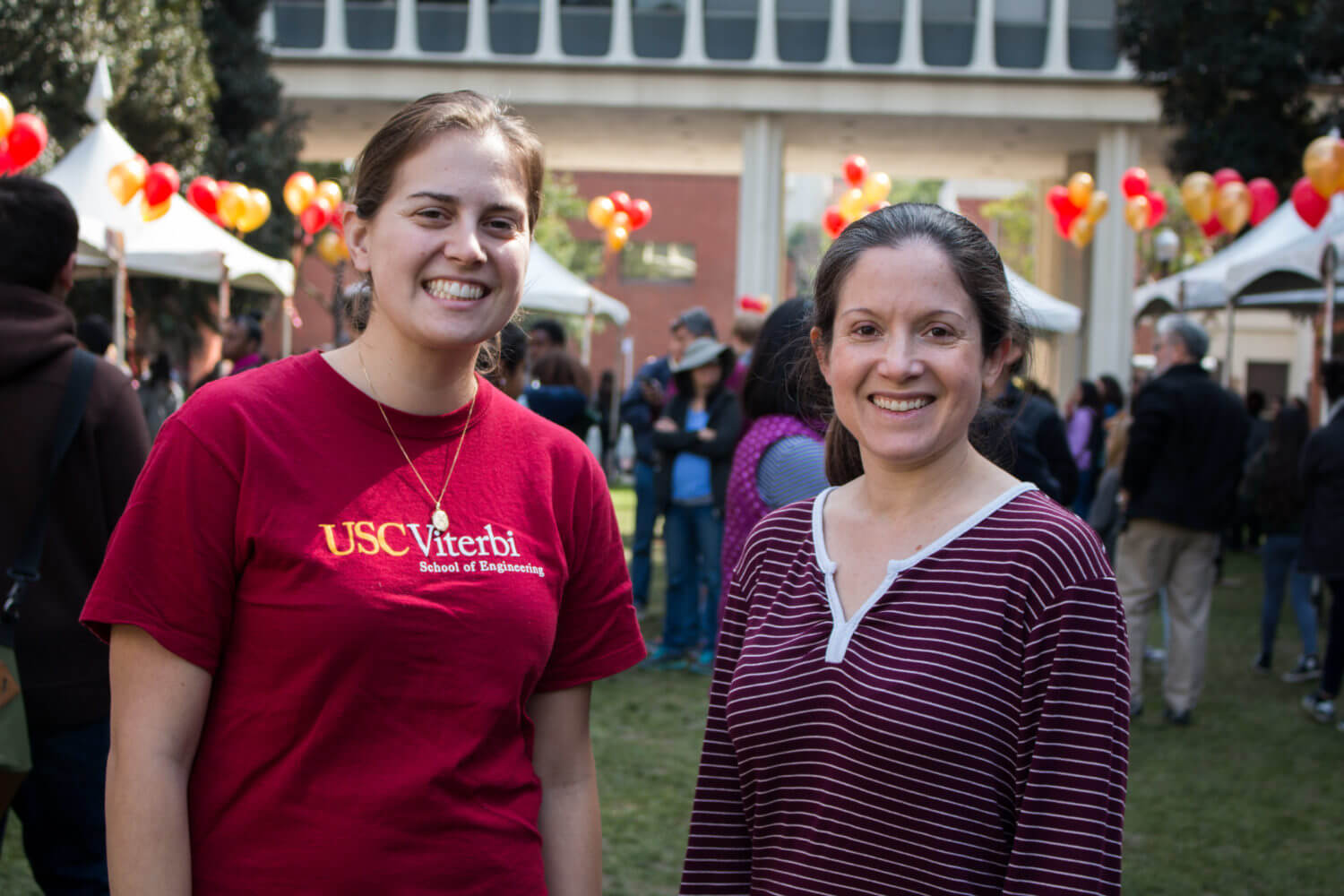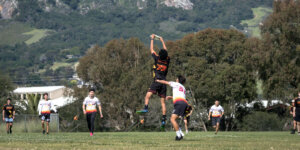
A student tries an Oculus Rift VR Headset for the first time. Photo/Valentina Suarez
A throng of L.A. middle and high school students flocked to USC Viterbi’s Epstein Family Engineering Plaza on Saturday, Feb. 25 for a day of hands-on activities, including everything from cellphone microscopes to virtual reality goggles. Engineering Exploratorium, or EngX, welcomed fifth through 12th graders to discover 10 immersive stations run by USC undergraduates, Ph.D. students and industry engineers.
“The goal of the event is to introduce as many middle and high school kids as possible to engineering,” said Associate Professor Andrea Armani, the event organizer and Fluor Early Career Chair in the Mork Family Department of Chemical Engineering and Materials Science. “I wanted to hold an inclusive event, where everyone is welcome.”
EngX, which was sponsored by the Office of Naval Research and USC Viterbi, drew more than 1,000 students from around L.A. The event was the second major outreach effort Armani and her students designed and hosted. In October 2015, the Lasers 4 Ladies event welcomed hundreds of middle and high school girls to participate in immersive optics activities on USC’s campus.
“Recently, there’s been a surge in outreach events that leverage coding and robotics. While it’s fabulous, it can incorrectly represent the possibilities of STEM education,” Armani said. “It’s important to show students the range of opportunities.”
Lasers 4 Ladies was such a hit that Armani and her students launched EngX, expanding both their audience and capacity to host hundreds of additional schoolchildren. EngX wrapped up National Engineers Week, which ran from Feb. 19 to Feb. 25.

Students crowd around the cell phone microscope station. Photo/Valentine Suarez
One popular module challenged students to create air-powered “race cars” using partially-filled water bottles on wheels, pressurized with bicycle pumps. Students had to balance the thrust-to-weight ratio of the car, so that when the cork was removed, the car stopped as close as possible to the center of the target.
At another station, kids played with cellphone microscopes, which were created on site using a 3D printer and tiny lenses that magnify up to 50x. Other popular activities included a giant Jenga game and a robotic ball that students could guide through a maze using a smartphone app.
After snapping a photo of his 14-year-old son at the robotics station, Antonio Saunders explained why they came to the event. “He’s been interested in engineering from a young age, so I wanted to give him the opportunity to see it in action,” he said. Saunders has an engineering degree himself, and feels proud that his son may follow in his footsteps.
Armani encourages the 15 USC undergraduates in her lab to participate in outreach efforts; they often connect naturally with middle and high-schoolers because they’re close in age. These interactions can be impactful for the USC students, too.
“Many undergraduates who have done research in my lab were originally planning to pursue a career in the industry,” Armani said. “As a result of their research experience, and of working with students during outreach events, they changed their career paths and decided to pursue a Ph.D.”

Andrea Armani and Alexa Hudnut at EngX. Photo/Valentina Suarez
Alexa Hudnut, a third-year Ph.D. student in Armani’s lab, said working with young students helps keep her grounded as she completes her degree. “Sometimes we’re so focused on our work, we get stuck in what we’re doing. I love having the opportunity to take a step back and remember how I got here, and to share that inspiration with others.”
The pay-it-forward mentality drives Armani as well. “No one in my family was an engineer, so without my college mentors, I would never have gotten my Ph.D. in engineering,” she said.
“As a faculty member, I believe one of the most important roles I can play is to inspire students to pursue a career in my field,” Armani added.
Published on March 12th, 2017
Last updated on November 7th, 2017








